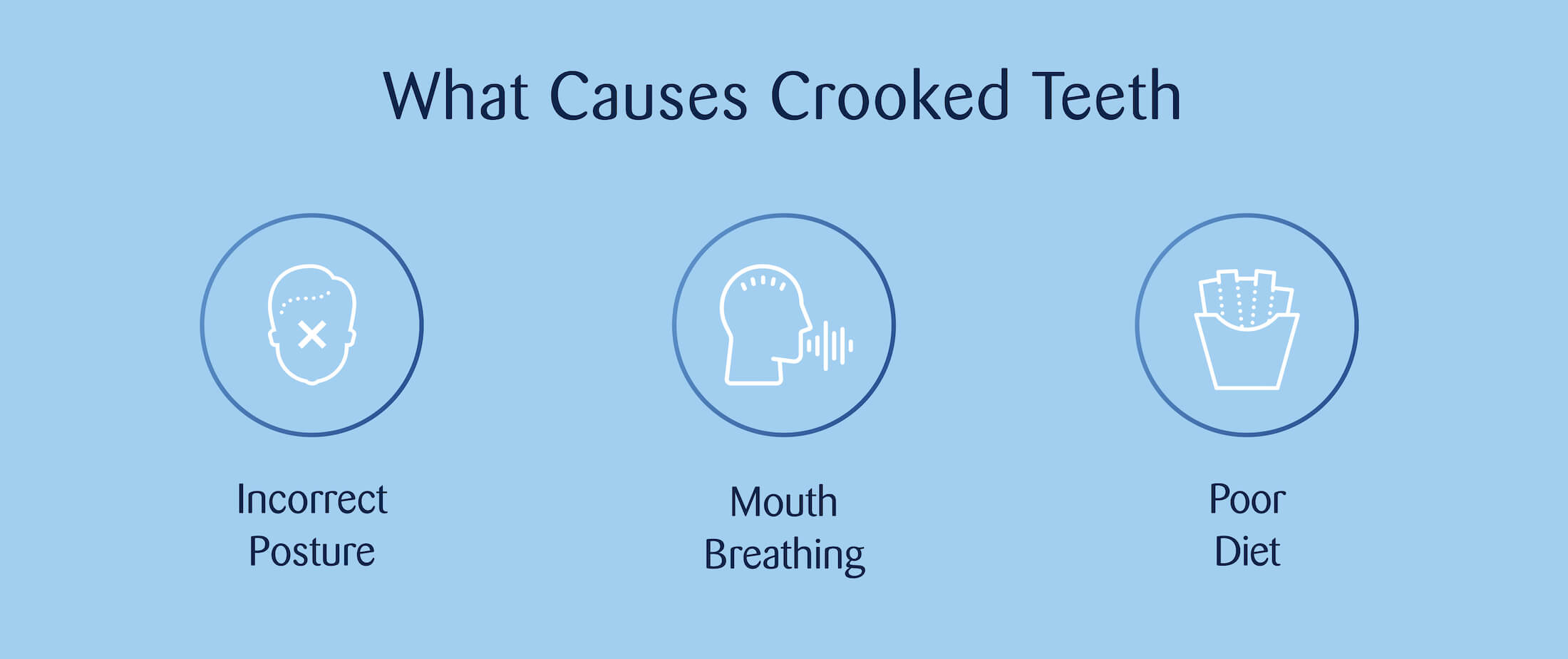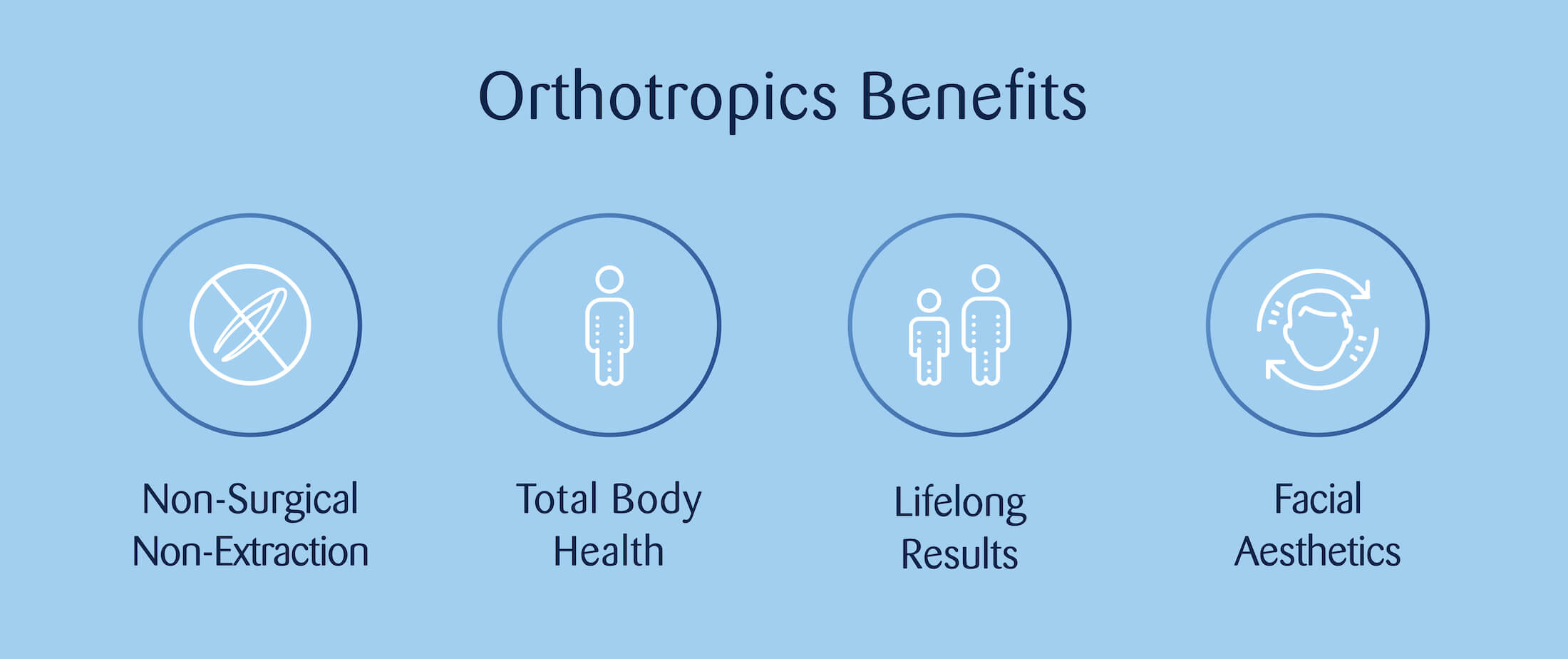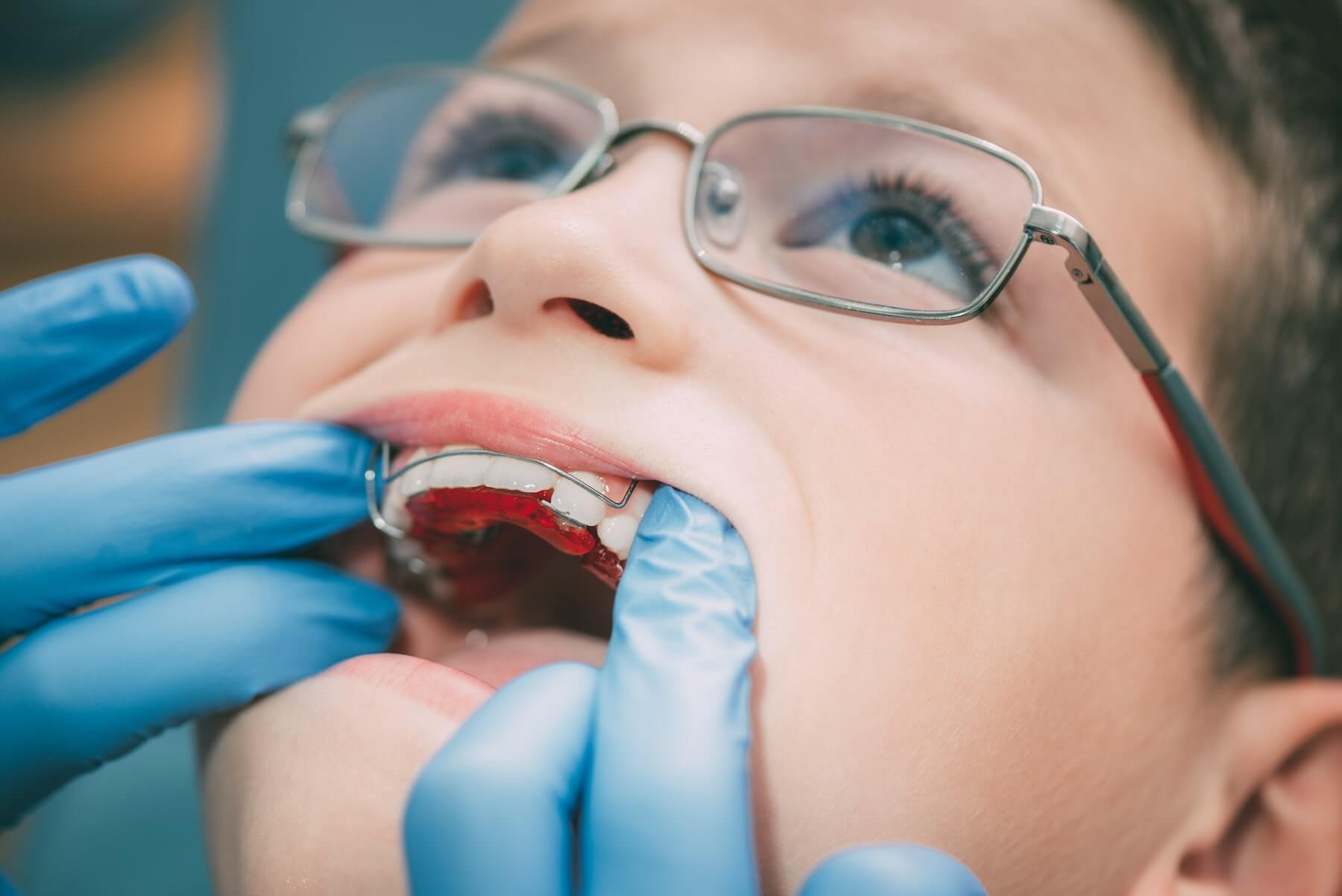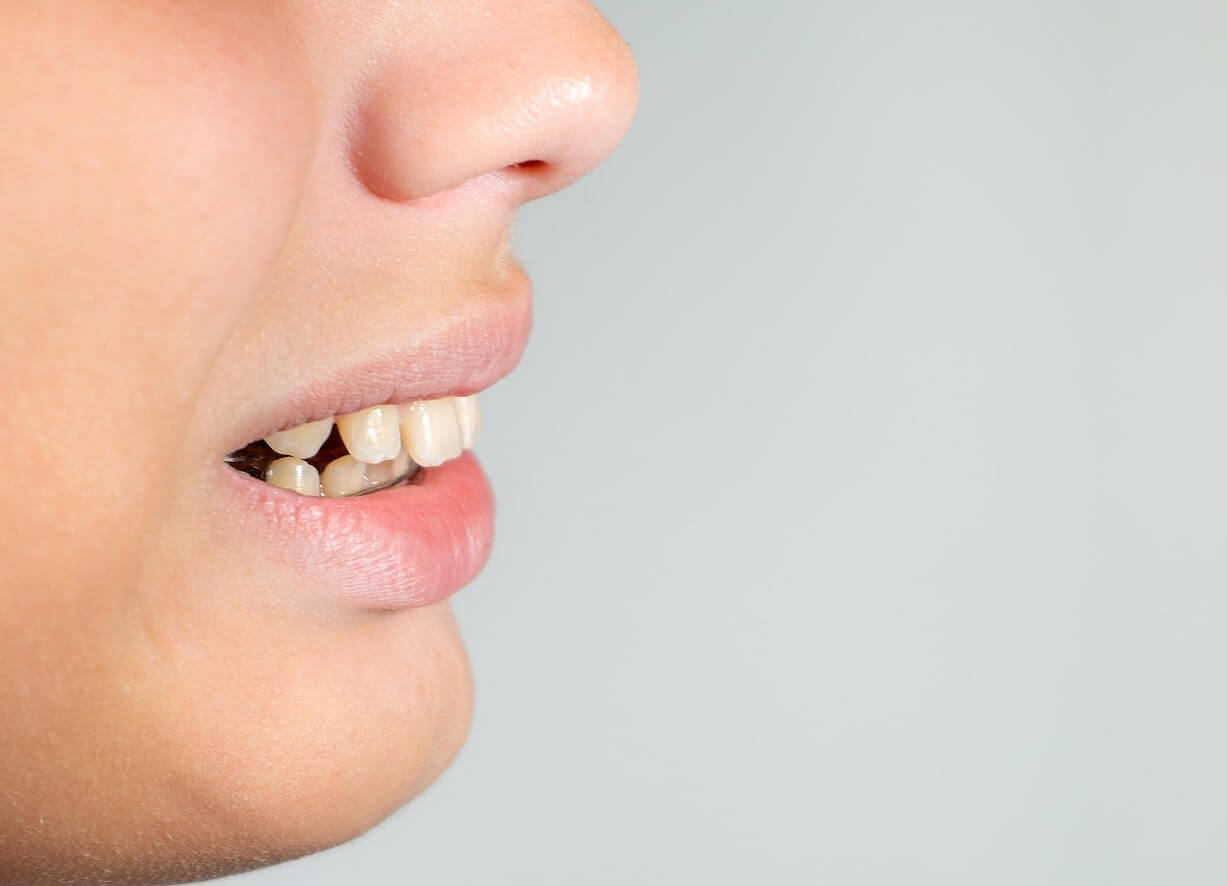Crooked Teeth: What Causes Crooked Teeth and How to Fix Them
Most people believe that crooked teeth are explained by genetics - that for some genetic reason, the mouth is too small to fit all the teeth
- thus forcing them to become crooked. The technical term for crooked teeth is 'malocclusion', which means the teeth are imperfectly
positioned when the jaws are closed. The commonly accepted school of thought is that because this is genetic, crooked teeth simply need to
be straightened - usually by mechanical appliances like braces. Sometimes, other appliances are used to correct bite positioning and other
things, but traditional orthodontics' focus is to straighten crooked teeth.
However, the belief that genetics is to blame for crooked teeth fails to acknowledge the myriad of other factors that contribute to and
cause the teeth to become crooked.
What Causes Crooked Teeth?
So if genetics is not the real cause behind malocclusion, what causes crooked teeth? The reality is that crooked teeth have less to do with
genetics than they do with posture, breathing and diet - all of which are intertwined and impact how the muscles of the face and jaw
develop. This is what causes crooked teeth.

Incorrect Facial Posture
Poor posture of the face is one of the leading causes of crooked teeth. Often, poor facial posture is derived from habits, breathing
difficulties and diet - or sometimes a combination of each. The posture of the face simply refers to the position of the tongue and mouth at
rest. If the tongue naturally sits on the roof of the mouth and the lips are closed at rest, that tends to indicate proper facial posture.
When the tongue sits on the roof of the mouth, it forces the maxilla (upper jaw bone) to widen, which creates more room for the teeth and
means the face will be more likely to grow forward instead of down.
However, when the tongue sits on the bottom of the mouth, it forces the mouth to hang open at rest - dragging the face down instead of
forward. When the mouth is open at rest, the tongue cannot be on the roof of the mouth, which means the maxilla (upper jaw bone) has nothing
to keep it from narrowing. This narrowing of the maxilla is what causes crooked teeth. Additionally, an open mouth and poor tongue posture
will force the chin to grow downwards and backwards, which cramps the jaw joints - creating more problems than just crooked teeth.
Mouth Breathing
Improper breathing - specifically breathing through the mouth instead of the nose - is another major cause of crooked teeth. Why? Because to
regularly breathe through your mouth, it must be regularly open. This - as discussed above - creates improper facial posture - forcing the
tongue away from its proper position on the roof of the mouth and dragging the face down. Mouth breathing is often a sign of an underlying
health issue, and as such, it is a complex issue that many different reasons can cause. For more information on mouth breathing, what it's
caused by and how it contributes to crooked teeth, click
here.
Poor Diet
Diet - specifically the toughness of food - is one of the leading contributors to the jaw muscles' development. The act of chewing is integral to developing and strengthening the muscles in the jaw. When the jaw muscles are strong and well developed, the jaws will be more inclined to grow forwards. Forward growth of the jaws is integral to the face's development and ensures there is room for the teeth. When the jaw grows forward, the mandible and maxilla are typically more expansive, which creates sufficient space for the teeth. A diet comprised of soft foods and liquids means less chewing is required, which means the jaw muscles are working less, and as a result, the likelihood of crooked teeth increases dramatically. Thus, a diet that is low in toughness can be what causes crooked teeth.
How to Fix Crooked Teeth
This all begs the question; how to fix crooked teeth? If crooked teeth are not the product of genetics, but are influenced by posture,
breathing and diet, what should the approach be to fixing them? Simply straightening the teeth - as would be done under traditional
orthodontics - seems like a bandaid approach when looking at crooked teeth through this prism.
The answer is orthotropics.
What is Orthotropics?
Orthotropics is a new approach on how to fix crooked teeth. Instead of taking the same approach as traditional orthodontics, which simply
seeks to straighten the teeth - possibly even extracting teeth to create more room - orthotropics focuses on correcting facial posture.
Orthotropic treatment encourages the jaw to widen, the face to grow forward and ultimately allows the teeth to fall into place naturally.
This is how we prefer to fix crooked teeth at Eric Davis Dental, as we view Orthotropics as a superior method to traditional orthodontics.
To learn more about our approach to orthotropics and how to fix crooked teeth, click
here.
What is Orthotropics?
How to Fix Crooked Teeth Without Braces
Most of you will be familiar with traditional orthodontics treatment that use mechanical appliances like braces to straighten and pull the
teeth into alignment. But how do you fix crooked teeth without braces? Instead of pulling the teeth into alignment, the approach is to
create room for the teeth so that they can straighten naturally. By doing this, we are treating the cause of crooked teeth, not merely
masking the symptoms.
Orthotropics actively avoids the use of braces which are fixed to the teeth and are non-removable. Instead, orthotropics uses special
'expansion' appliances (which are removable) designed to widen the maxilla and promote proper facial posture where the tongue sits on the
roof of the mouth, the mouth is closed at rest and breathing is done through the nose. This is how to fix crooked teeth without braces.
Learn more about orthotropics and how it is superior to traditional orthodontics
Fixing Crooked Teeth Without Braces: The Benefits
Following orthotropics and fixing crooked teeth without braces is a totally different treatment style that offers several benefits over
traditional orthodontics.

No Extraction and Non-Surgical
In traditional orthodontics, teeth are commonly extracted to create room for other teeth, which are then pulled into line by braces.
Orthotropics, on the other hand, prefers to expand the maxilla (top jaw) and develop the mouth so that all teeth can fall into place and
straighten naturally.
Total Body Health and Proper Breathing
One of the primary benefits of fixing crooked teeth without braces and opting for orthotropic treatment is that it expands the jaws and
encourages them to grow forward. This opens up the airway - allowing sufficient oxygen to pass through, which can negate conditions like
sleep apnoea later in life. It also ensures the jaw joints are functioning properly, which aids in preventing pain from occurring later in
life and the potential need for surgical intervention.
Lifelong Results and Retention
In traditional orthodontics, the teeth often tend to shift closer to their original position after treatment. This is because the catalysts
for crooked teeth - posture, breathing and diet - have not been addressed. Fixing crooked teeth without braces via orthotropic treatment
addresses the cause rather than the symptom, and thus it often has better retention of results.
Improving the Face, Not Just the Teeth
By widening the jaw and encouraging the face to grow forwards instead of down, orthotropic treatment achieves better aesthetic results.
Traditional orthodontic treatment may straighten the teeth, but the face may continue to grow in a downward fashion - meaning the chin is
recessed, the nose elongated and the smile quite gummy. By fixing crooked teeth without braces via orthotropics, the face will grow forward
and will often be more aesthetically pleasing. The results of studies conducted on twins highlight the benefits of forward facial growth
particularly well.
Read More About Crooked Teeth and Orthotropics

The Differences Between Orthotropics & Orthodontics
On face value, orthodontics and orthotropics are very similar...
Published July 24, 2020 by Dr Daniel Davis

Mouth Breathing and How it Causes Malocclusion
Does your child breathe through their mouth? If yes, you may want to read this...
Published July 24, 2020 by Dr Daniel Davis
Does Your Child Have Crooked Teeth? Book an Appointment Today!
You and your child will be receiving the very best orthodontic and orthotropic care by internationally recognised orthotropists Dr Daniel
Davis and Dr Eric Davis.

